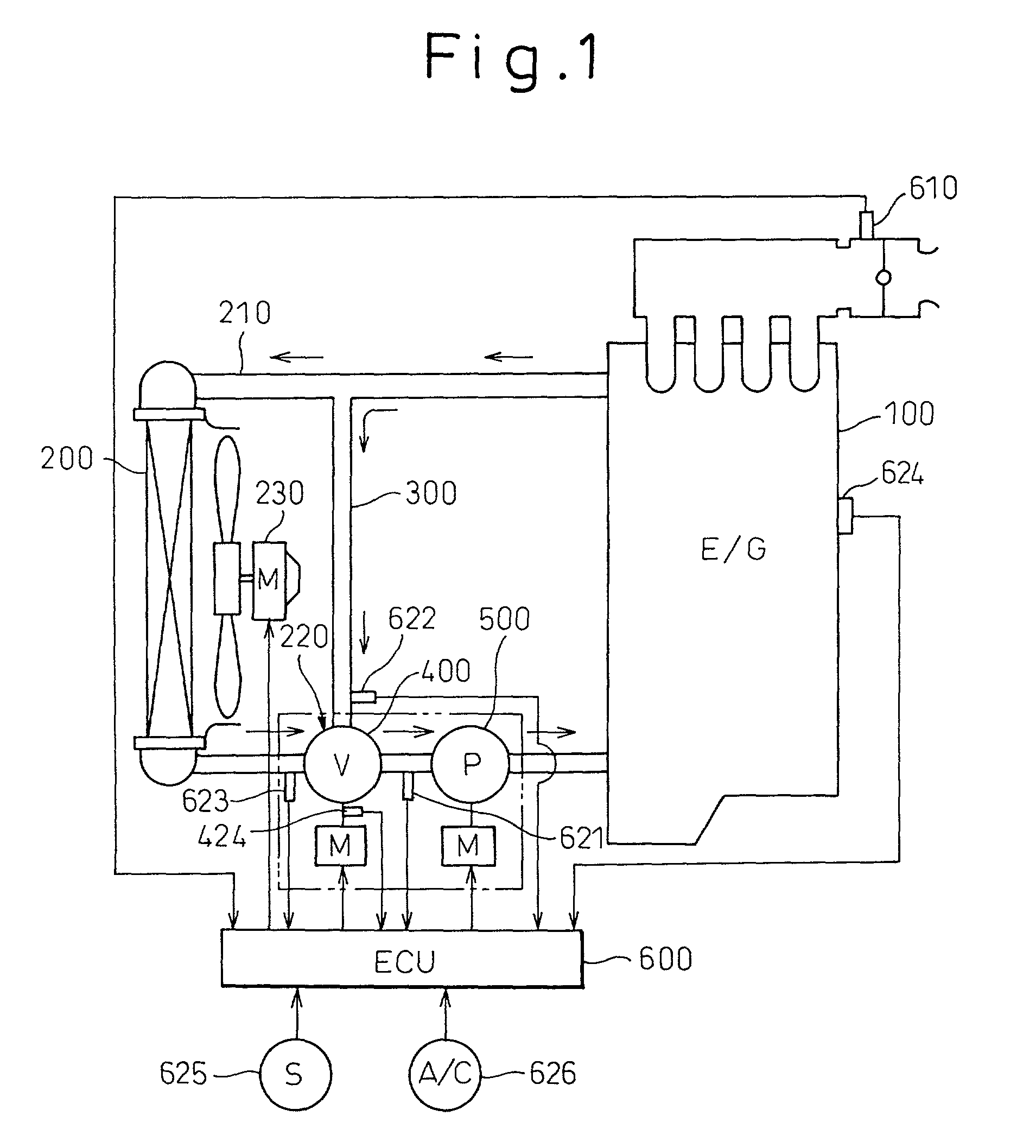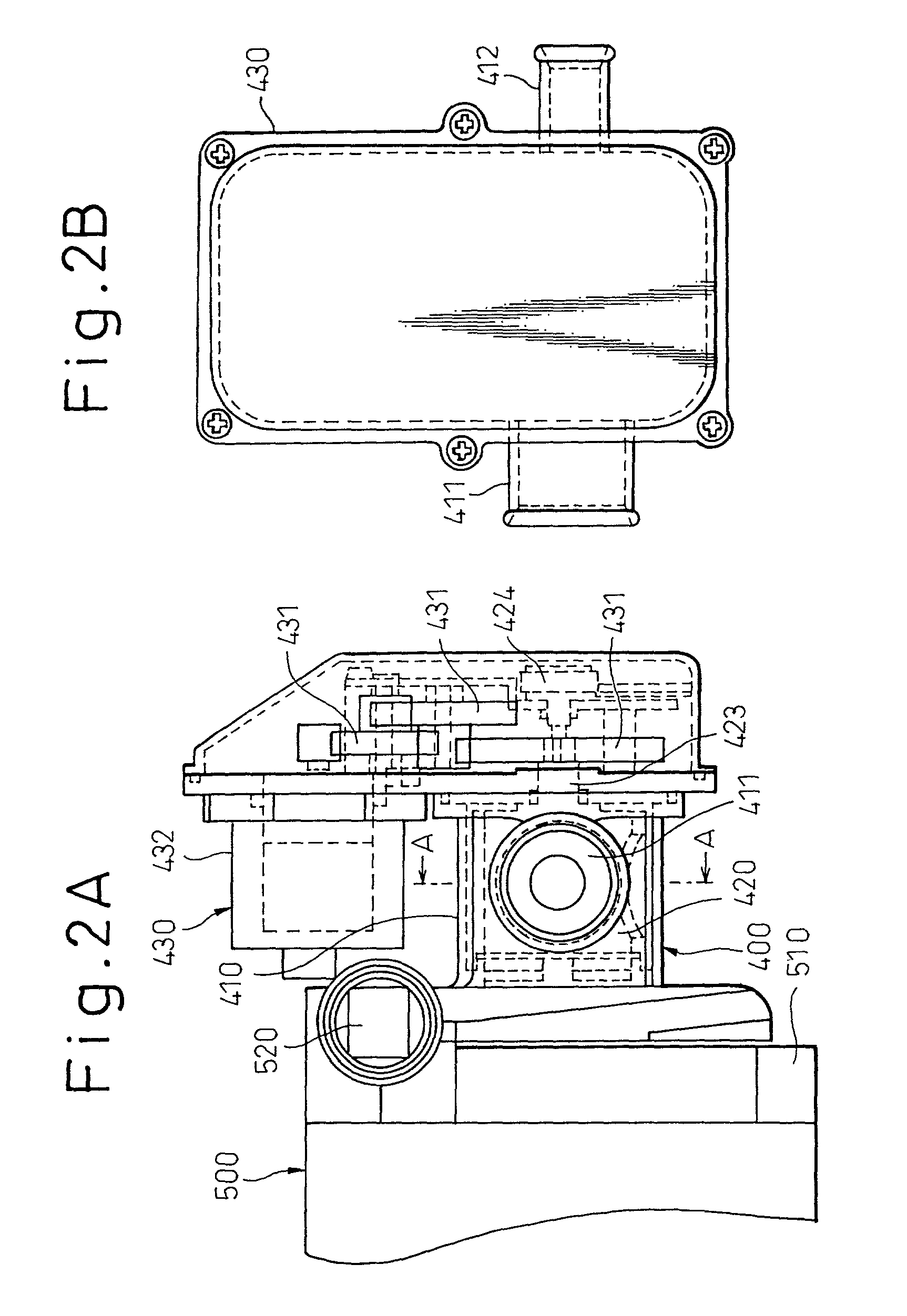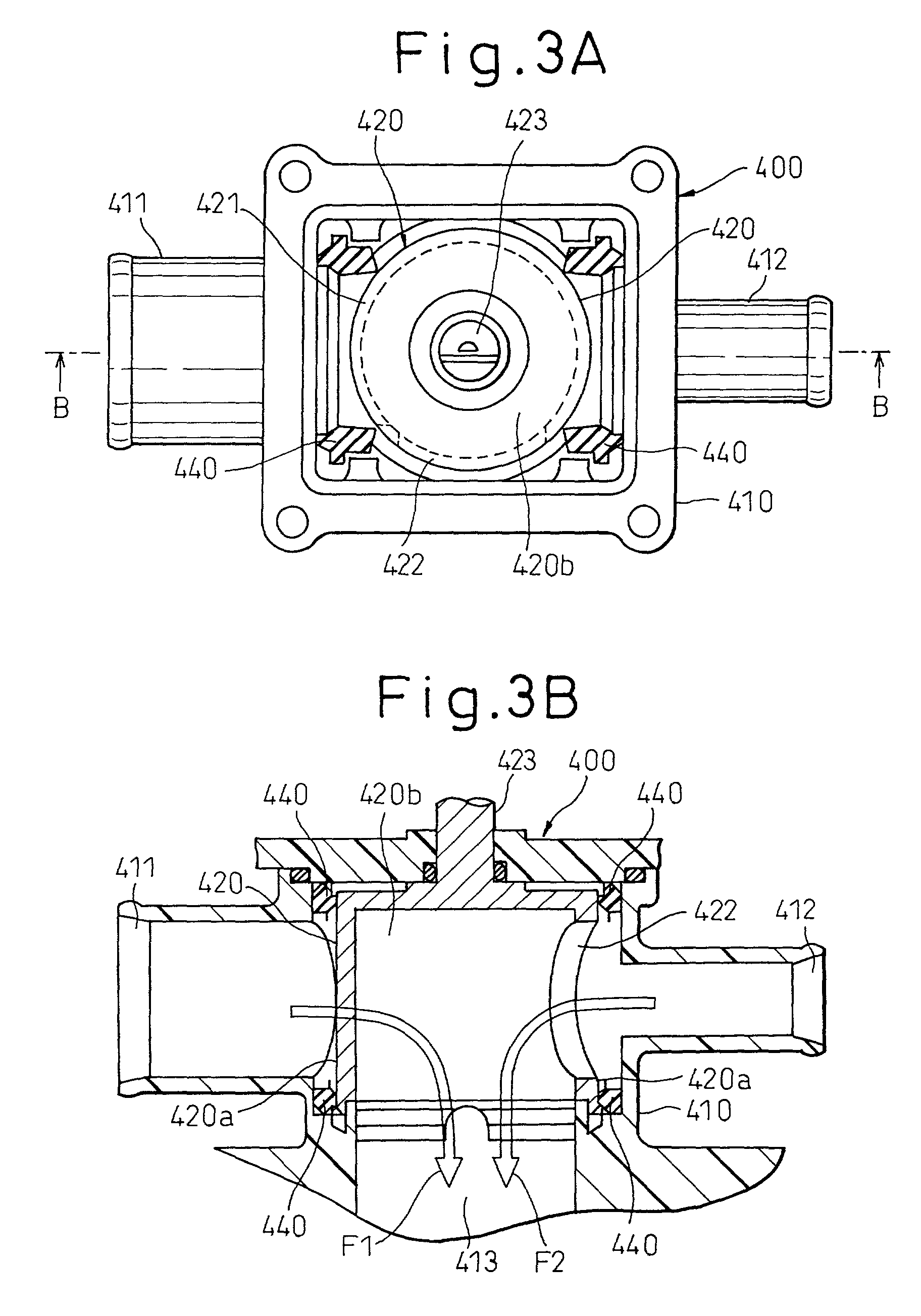Cooling device for liquid-cooled type internal combustion engine
a technology of internal combustion engine and cooling device, which is applied in the direction of engine cooling apparatus, measurement device, machine/engine, etc., can solve the problems of power consumption, problem of conventional cooling device,
- Summary
- Abstract
- Description
- Claims
- Application Information
AI Technical Summary
Problems solved by technology
Method used
Image
Examples
first embodiment
[0022] (First Embodiment)
[0023] In this embodiment, a cooling device for a liquid-cooled type internal combustion engine according to the present invention is applied to a water-cooled type engine (a liquid-cooled type internal combustion engine) for a vehicle. FIG. 1 illustrates a schematic view of the cooling device of this embodiment.
[0024] In FIG. 1, reference numeral 200 denotes a radiator for cooling water (coolant) circulating the interior of a water-cooled type engine (hereinafter referred to as an engine) 199, and 210 denotes a radiator circuit for circulating the coolant through the radiator 200.
[0025] Reference numeral 300 denotes a bypass circuit for guiding the coolant flowing out of the engine 100 to a region of the radiator circuit 210 on an exit side of the radiator 200, while making the coolant bypass the radiator 200. At a position 220 at which the coolant from the bypass circuit 300 and that from the radiator circuit 210 meet, a rotary type electric flow rate cont...
second embodiment
[0060] (Second Embodiment)
[0061] According to the first embodiment, the power consumption of the pump 500 can be saved even if the same discharge flow rate is obtained, by increasing the valve opening degree .theta. to reduce the water flow resistance and thus lower the pump duty. It has, however, been found from the more detailed study that there is the following problem.
[0062] That is, FIG. 9 is an equivalent circuit showing a water flow resistance of a water flow system in the cooling device shown in FIG. 1. In some cases, a total water flow resistance may become minimum when the valve opening degree .theta. is smaller than 100% if the water flow resistances are so distributed in the respective parts. The valve opening degree .theta. at which the total water flow resistance becomes minimum is hereinafter referred to as a minimum resistance opening degree .theta.x.
[0063] If the valve opening degree .theta. becomes the minimum resistance opening degree .theta.min, for example, when...
PUM
 Login to View More
Login to View More Abstract
Description
Claims
Application Information
 Login to View More
Login to View More - R&D
- Intellectual Property
- Life Sciences
- Materials
- Tech Scout
- Unparalleled Data Quality
- Higher Quality Content
- 60% Fewer Hallucinations
Browse by: Latest US Patents, China's latest patents, Technical Efficacy Thesaurus, Application Domain, Technology Topic, Popular Technical Reports.
© 2025 PatSnap. All rights reserved.Legal|Privacy policy|Modern Slavery Act Transparency Statement|Sitemap|About US| Contact US: help@patsnap.com



